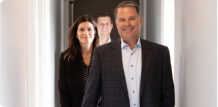Most sell side firms publish their outlook for the economy and stock market at the end of December and in early January. As a buy side firm, we really aren’t under any expectation to share our outlook for the coming year and, as funny as it might sound, some of our clients don’t even care to know what we think, only that we handle what they hired us to do, which is to outperform the market indices over a full market cycle and help them attain their financial goals over time. (View a printable version of this Economic Update: Broadleaf's 2014 Investment Playbook )
Regardless of outsider expectations, we often do put our thinking in writing to organize our thoughts and help us give form to our portfolio strategies for the coming year. But be forewarned; the markets are fluid and the world is ever changing - what is said and anticipated at the beginning of a year can and often does change as real life events unfold.
This may be a key reason that the buyside – firms like ours - don’t publish their thoughts as often as the sell side does. While the sell side and the media are generally paid to ruminate on anything that might be newsworthy, our clients generally expect us to separate the noise from substance on their behalf and to take action as necessary.
If you are reading this update or have read them in the past, our hope is that our years of personal experience in the business might help you become a more informed investor. If, on the other hand, you’d like someone to do your investing for you, our door is always open.
*****
So far, the financial markets have been off to a shaky start in 2014, particularly in the international sphere. While last January ranked among the best in fifty years for the financial markets, this one is shaping up as one of the worst. Knowing this, we thought we would share our investment playbook for 2014 in four key bullet points.
- 2014 could look a lot like 1994 with early weakness eventually giving way to a multi–year period of economic and stock market strength.
In 1994, the Fed tightened interest rates six times in the face of a stronger economy, derailing the stock market for a period of time and ushering in a bond market rout and credit crisis for several emerging markets whose debt was one way or another tied to our treasury bonds.
While Fed tapering in 2014 isn’t the same as tightening in 1994, it represents a step in that direction, which the global markets are beginning to anticipate with a heightened level of anxiety. As long as the economy maintains its recent positive rate of improvement, however, Janet Yellen’s Fed will be inclined to use words rather than direct financial market intervention to affect its desired policy outcomes.
As we alluded to in an update last year, the Fed is like the catcher in baseball. Rather than enforcing its authority by throwing the ball at anyone attempting to steal a base and unsettle the markets, the Fed will now be relying on its mere presence, the memory of its strong arm, and words alone to keep Wall Street’s cowboys from getting out of control.
For the Rickey Henderson’s of the world, the shift in policy, though subtle, represents a green light to “play ball”. Anxiety levels will rise in such an environment as January’s action may already be showing us, but the good news is that the Fed has greater faith in the health of the economy and its ability to chart its own course.
- Developed markets should outperform developing markets.
Investors should emphasize the United States and to a lesser extent developed markets like Europe in their portfolios, while remaining wary of emerging markets with embedded inflationary problems and budding signs of credit troubles from excessive, multi-year periods of unbridled growth.
We would be particularly wary of China and other countries whose success has largely coincided with the commodity supercycle of the last fifteen years. We believe we are at the cusp of a long leg down in the commodity supercycle, which should be good for the United States and other economies that suffered, relatively speaking, during the past fifteen year upcycle.
On Parker Hannifin’s most recent earnings call, a company Alan Greenspan looked to as the best pulse of the economy, management commented that China would no longer grow at 13% annually, but that 5% was likely possible over time, with maybe 7% at the high end. With most economists expecting 7% growth and the Chinese Communist Party targeting 7-8%, additional downside is plausible, particularly given the crackdown on fraud and excess in government.
Next week, we will get our first read on the final Q4 US GDP numbers, which could be close to 4%. If we can do 3-4% in 2014 and China really only grows 5%, the mindset of an entire generation of investors could be set to change along with recent patterns of capital flows. Converging growth patterns between developed and emerging economies, whatever the level, should be a stabilizing factor for our domestic economy.
- Following some initial weakness, our stock market should find firmer ground as domestic earnings gains persist and three secular tailwinds find greater footing.
The energy renaissance should lead to further employment gains for the domestic manufacturing sector and economy as a whole. While not exactly the same, the energy renaissance has the potential to power our economy in the same way that Reagan’s tax policies did during the eighties.
Slower growth in China and other emerging markets should similarly temper commodity prices, helping keep domestic inflation restrained and improving U.S. consumer’s purchasing power.
Finally, technology innovations from folks like Google in leading the theme of “making old things new again” could usher in a period of productivity driven growth not too dissimilar to what we saw in the late 90’s, a very strong period for the stock market.
- In spite of fears of a significant back up in domestic interest rates, a low inflation environment and troubles in emerging markets could keep domestic rates low, providing a further boost to our economy even as Fed intervention starts to recede.
Worldwide economies will no longer be as synchronized as they have been in recent years and the Fed’s outlook that interest rates will remain lower for longer may come to pass not because of their words or direct actions in the financial markets, but because of a strengthening dollar and improvements at home relative to other areas of the world. Interest rates will likely rise to be sure as the domestic economy improves, but weakness elsewhere may keep them lower than it otherwise might have been, an additional positive for the U.S. consumer.
*****
Each year, we typically take a look at the year that was and critique the outcome relative to our original line of thinking. In our first Economic Update of 2013, “An Apple’s First Worm,” we made four general observations, referencing two stocks. While it wasn’t necessarily written as an outlook piece, three of our ideas proved to be good advice for the year, and the fourth remains a work in progress, but one we continue to believe will work out over time.
Highlights from last year’s piece were as follows:
- We used Apple to highlight the importance of a good sell discipline.
After years of owning and making a lot of money for clients in Apple, we highlighted the importance of having a well-defined sell discipline. In the update, we discussed our decision to reduce the position, which we eventually eliminated. That decision, along with our return to the name at lower price levels proved to be good calls by year end and are also a reminder that just because you sell a stock doesn’t mean you can’t return to it later.
In spite of this successful outcome, the point of having a well-defined sell discipline is to keep you from becoming emotionally tied to your holdings, particularly those that have been good to you for many years. Marry a wife, not the stocks in your portfolio. They won’t sue you when you get divorced.
- Using our decision to buy Facebook last year, we provided several reasons why popular reporting by the financial media often occurs at the worst time relative to actionable investment advice.
At the height of the media’s skepticism over Facebook and its botched IPO, we established an initial position at $20.20/share under the belief that the social network qualified as a transformative technology, one which like the steam engine, auto, and computer made the world a smaller place, a common characteristic of some of the world’s greatest wealth creating machines.
While we had some positions that didn’t work out during the year, our observation about the popular media, transformative technologies, and our publicized decision to buy Facebook were beneficial for our investors. Media bearishness on Apple proved, on the other hand, to be a good call, although investors who bought at the extreme of such reporting have likely been well rewarded.
- We believed that the economy would “move beyond recovery and into an expansion in 2013 and that even in an era of a New Normal, this meant we would likely see new all-time highs for the stock market.”
The market did reach new all-time highs in 2013, surging over 30%. While we got the all-time high call correct, we’d be lying if we didn’t admit to being surprised by the magnitude of such highs.
- We took issue with those who believed the United States’ best days were behind her, citing the budding US renaissance in energy production and manufacturing as two compelling reasons to maintain a modicum of optimism.
While energy production levels have surged to all-time highs, the benefits of such production remain a work in progress and in general haven’t yet been obvious to many in the economy at large. We still believe that these events are game changing and remain in our playbook for 2014.
In closing, we remain optimistic on the outlook for the markets in 2014, but wouldn’t be surprised to see some turbulence this year as folks get used to riding an economy that just lost the Fed’s training wheels.
It’ll be bumpy, but for the long term investor who has experienced the last three years, hardly newsworthy.
Kindest Regards,
Doug MacKay, CEO & CIO Bill Hoover, President Mike Czekaj, Research Analyst



